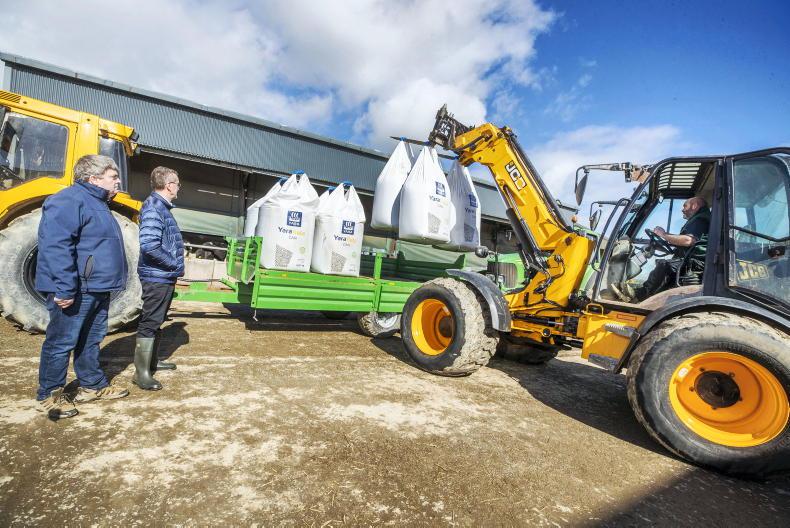While the spring of 2022 was a time of hyper-inflation for farm input costs in general, the one that perhaps stood out most was the leap in fertiliser prices.
Alongside the price, there was also the issue of supply and when farm outputs were rising, as they were in the first half of the year, getting supply was as important as price.
Fast forward a year and merchants have good supplies in place, sourced in late 2022 but at a high price.
Dairy and sheep prices, in particular, have been under pressure and while beef prices may be relatively good, the reality is that this is always a low-margin business where production cost is king.
Tillage had a relatively good year in 2022, but prices for the incoming season are less certain and weather is the important variable beyond every farmer's control.
Merchants caught with high-priced stocks
Against this backdrop, fertiliser merchants are sitting with lots of stock purchased at 2022 prices and now discover that the global market is falling.
Irish farmers are getting access to a trickle of these cheaper supplies and naturally want the lowest imported price to be the new base.
Merchants, on the other hand, are trying to sell on the model of price they purchased at, plus margin to cover costs and profits.
If farmers can access adequate supplies at the lower price, then merchants have to face the reality of having to reduce prices and cut their losses.
Irish Farmers' Association (IFA) grain committee vice-chair John Murphy put it succinctly this week when he said that “in a rising market [last year], the mantra was that fertiliser had to be sold at its replacement cost”.
The inference here is that merchants have to look at the current market price, as opposed to their purchase price.
Applying this over last year and this year would mean that they gained from selling low-priced stock at higher values and now have to face up to selling higher-priced stocks at the current lower market value.
Markets punish as well as reward
The principle of the market setting the price applies to any commodity traded.
Oil and gas prices are dramatically lower than they were a year ago because there are adequate stocks and Europe has adjusted to the mindset of war in Ukraine.
The same applies to agri prices - when there are abundant supplies of milk powders, butter, cheese or beef, the market falls.
Farmers operate in this environment when they buy cattle for either the grazing season or winter finishing.
The price they will get may bear no relation to what they paid when they buy the cattle; it will be set by the value on the day they sell.
This is the scenario that faces fertiliser merchants now holding stocks that were bought at a higher price than the current market value.
Their problem is magnified by the fact that fertiliser is a product with a relatively low-price spread; it is only in the last 18 months that it has experienced massive volatility.









SHARING OPTIONS